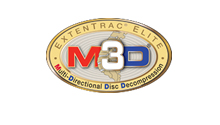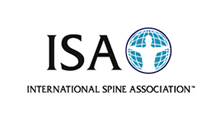
Spine Disorders
|
WHEN TO SEE A SPINE
SPECIALIST You should
seek the advice of a spine specialist if neck or back pain persists for more
than two weeks or if it is progressive in intensity and/or distribution. You
should seek immediate healthcare attention if neck or back pain occurs as the
result of an injury or if it is associated with serious illness and/or a high
fever. Additional signs and symptoms which warrant prompt medical attention
include:
SCREENING AND DIAGNOSIS Facet arthropathy
may be associated with a facet syndrome. The term syndrome refers to a
constellation of signs and symptoms characteristic of an underlying disorder.
The diagnosis of a facet syndrome is often made based upon the patient’s
personal history and physical examination findings. There are a number of
different orthopedic tests which help confirm the presence of abnormal spinal
segment movement and/or inflammation involving a facet joint. Plain films or
regular X-ray are adequate for demonstrating the presence and severity of
degenerative facet changes. The most
common features on X-ray include overgrowth of the bone of the facet (bone
hypertrophy) and erosion of the facet joint cartilage resulting in joint space
narrowing. Facet arthropathy is often accompanied by spondylosis, a condition referring
to degenerative related boney changes including spurring of the adjacent
vertebrae. Advanced imaging such as CT and MRI can be particular helpful. On CT
there are characteristic boney changes involving the facet joint. They often assume a mushroom cap
appearance. There is often some thickening of bone under the degenerative cartilage
a process called sclerosis. MRI reveals more information about the soft tissues
of and around the facet joint. Like CT, MRI will reveal joint space narrowing.
Some patients will show thickening of the synovium (joint lining) and the joint
capsule. MRI is good for assessing compromise of adjacent neurological
structures such as the spinal nerve and the spinal cord. Spinal
disorders which may present similarly to facet arthropathy which may have to be
ruled out include a healing facet fracture and various other inflammatory joint
disorders. This includes:
Your
attending healthcare provider may have to order lab work and imaging studies of
other body areas to help determine if you have one of these forms of arthritis.
More than one form of arthritis can be present with degenerative facet
arthropathy. |
















